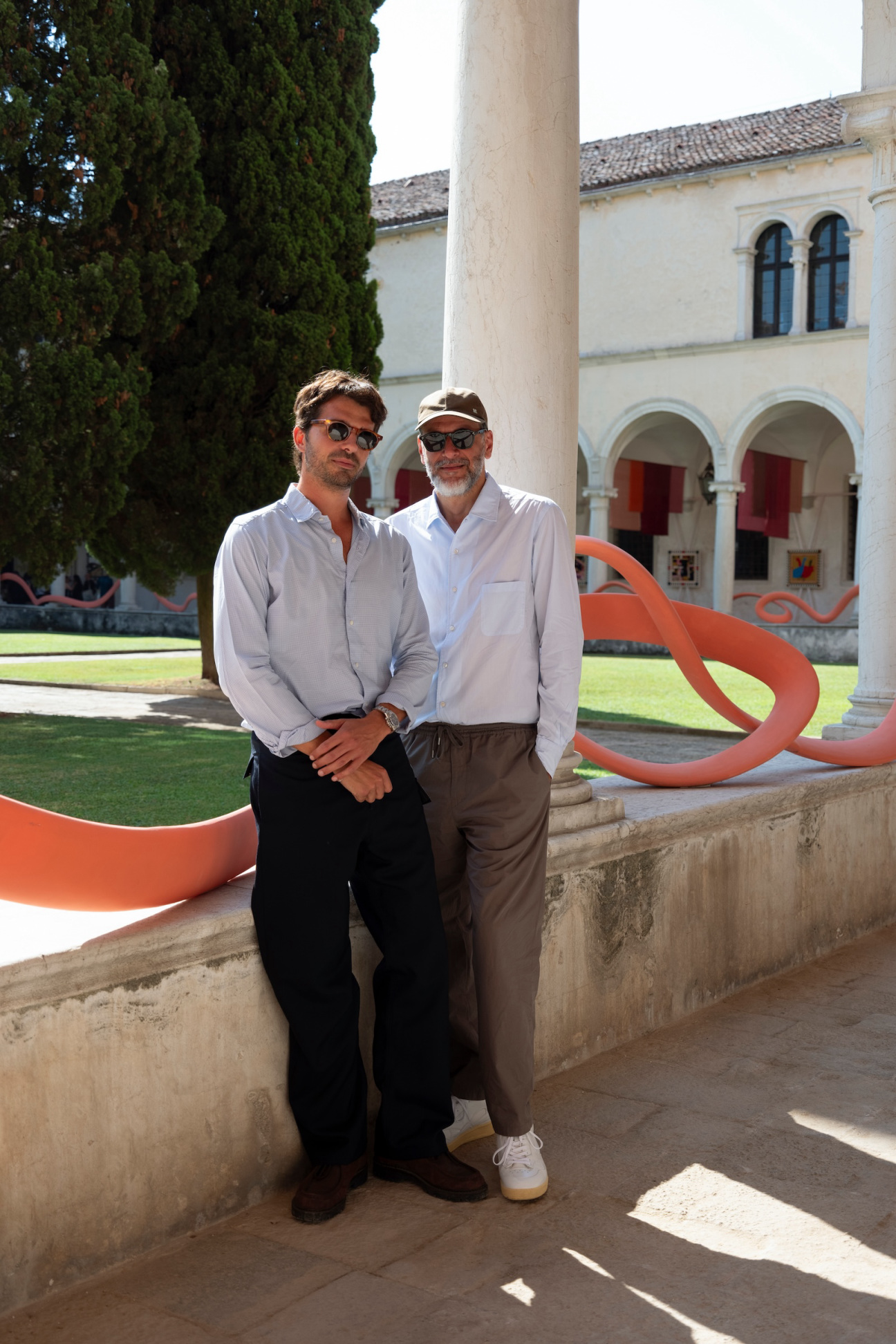
“What I love about my life is that I have these ideas, this capacity of wonderment,” said Luca Guadagnino in Venice earlier this year. “When you’re like that and you make things, you have the power to make people who don’t have that attitude feel something new.”
The decorated filmmaker is celebrated on the festival and awards circuits for his capacity for worldbuilding—Guadagnino nestles his characters into intimate universes that draw their lushness from his own disparate homelands. Born to a Moroccan mother and Sicilian father, Guadagnino spent his early years in Ethiopia before his family relocated to Palermo—a cultural melange that has yielded a varied oeuvre. This year alone, he released the thirst-quenching, raunchy sports flick (Challengers) and a quiet period drama (Queer). Though the two films have little in common, they reveal the filmmaker’s love of long-term collaboration—both bear the mark of Jonathan Anderson, creative director at Loewe and long time friend of Guadagnino’s, whom he tapped as his costume designer.
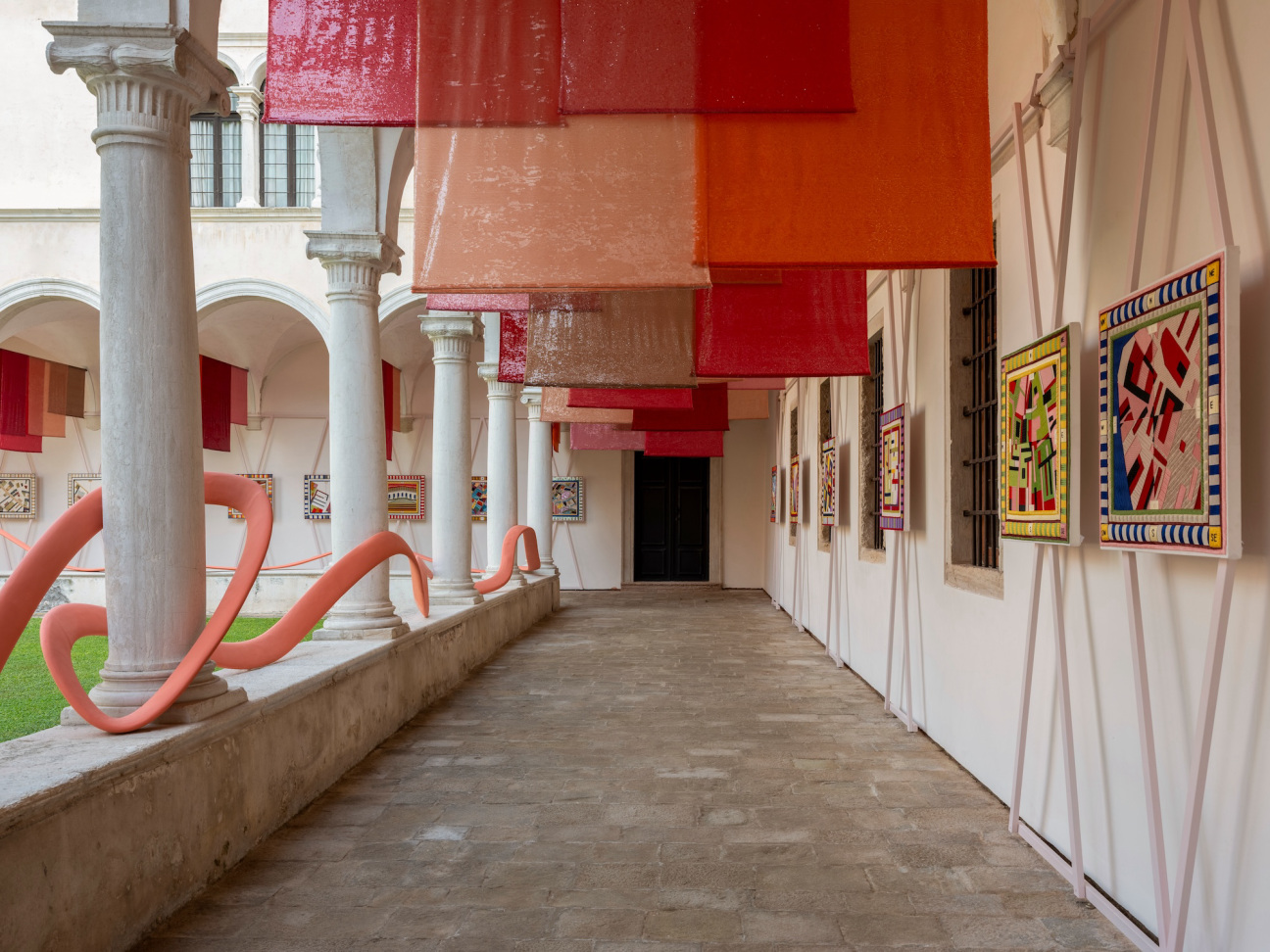
But Challengers and Queer weren’t the only major undertakings on the filmmaker’s radar this year. While filming Queer, Guadagnino also took on an entirely different role—as co-creative director of Homo Faber, Venice’s annual showcase of contemporary craftsmanship and design at the Fondazione Giorgio Cini on San Giorgio Maggiore island. This year’s edition of the festival bears the theme “The Journey of Life”—a weighty prompt that Guadagnino responded to in collaboration with Milanese architect and curator Nicolò Rosmarini.
The fruits of their partnership—situated chronologically across countless high-cielinged rooms and courtyards of the picturesque San Giorgio Monastery—is an exercise in full immersion that traces the impact of hand-crafted objects on a human life. Sitting in an airy room in the Monastery, Guadagnino and Rosmarini recalled the earliest days of the experience. “I started by drawing a ribbon; a thread connecting the journey from childhood to death,” the filmmaker recalled. “For me, it was about harnessing the architecture of the space to create monumental installations, but also to celebrate small moments in every room,” added Rosmarini.
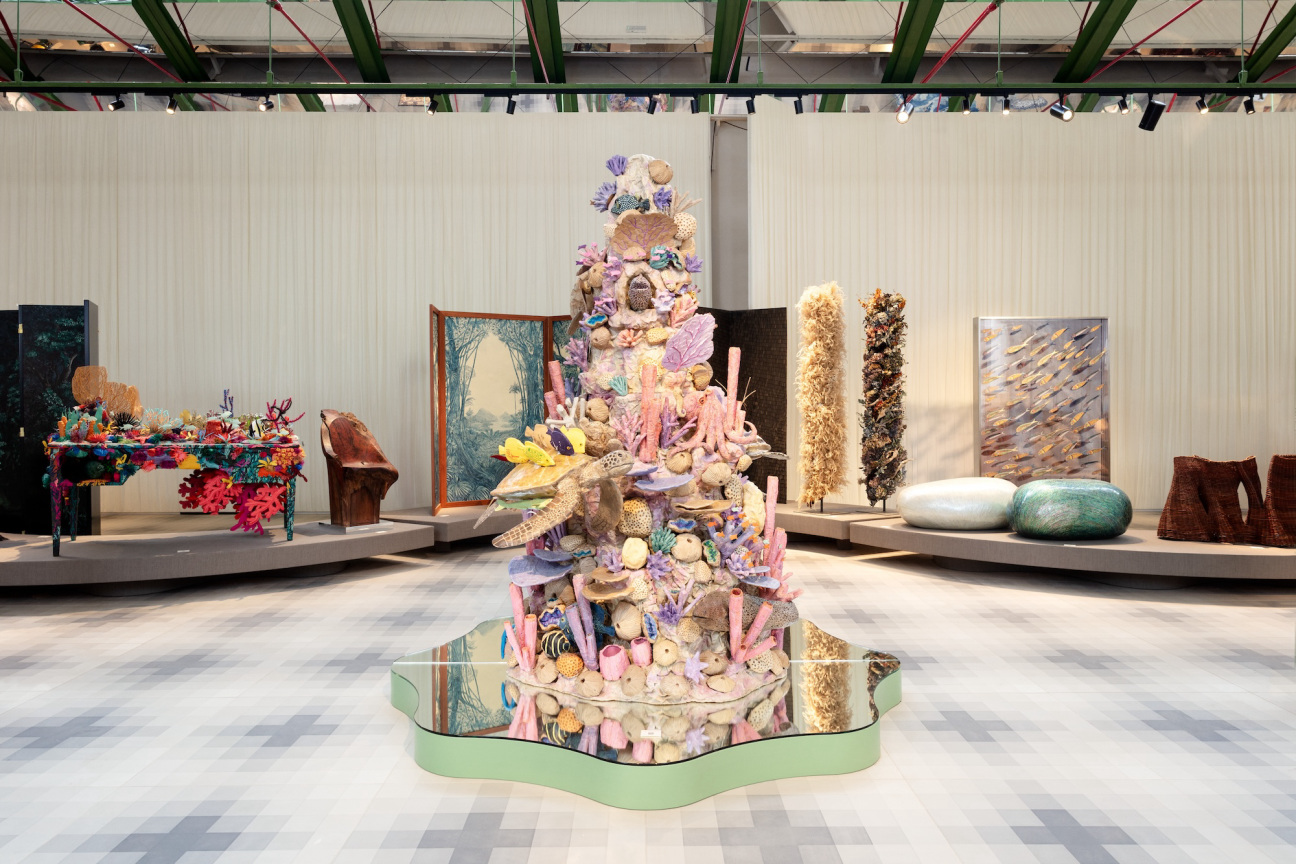
Homo Faber, now in its third year, previously welcomed a group of curators present their visions in individual spaces. “This time, we were the only ones and we approached it on a monumental scale,” Guadagnino said. Indeed, each themed space—encompassing everything from birth and childhood to death and the afterlife—bristles with meticulously crafted objects ranging in size from glass sculptures no bigger than a pencil eraser to the looming papier mache cypress trees (marking the transition from youth to adulthood) that tower over the main hall’s marble staircase.
The show might be Guadagnino’s most arresting creation yet—but does it live up to its co-curators’ standards? “It’s new for me,” Guadagnino said. “I'm used to the audience of cinema. I'm used to going to festivals or premieres and to talking directly to the critics, the journalists, the VIPs…Speaking to artisans, collectors, and curators is different. It’s hard to know how they feel.” Allowing visitors to meander through this creation and draw conclusions on their own time is a foreign experience for the director, but it’s quite a familiar one for Rosmarini: “We wanted the people to come in and be stunned, but not to think of the effort involved,” he said. “I think we did that.”
CULTURED sat down with the pair to discuss their collaboration and—the many surprising things they taught one another along the way.
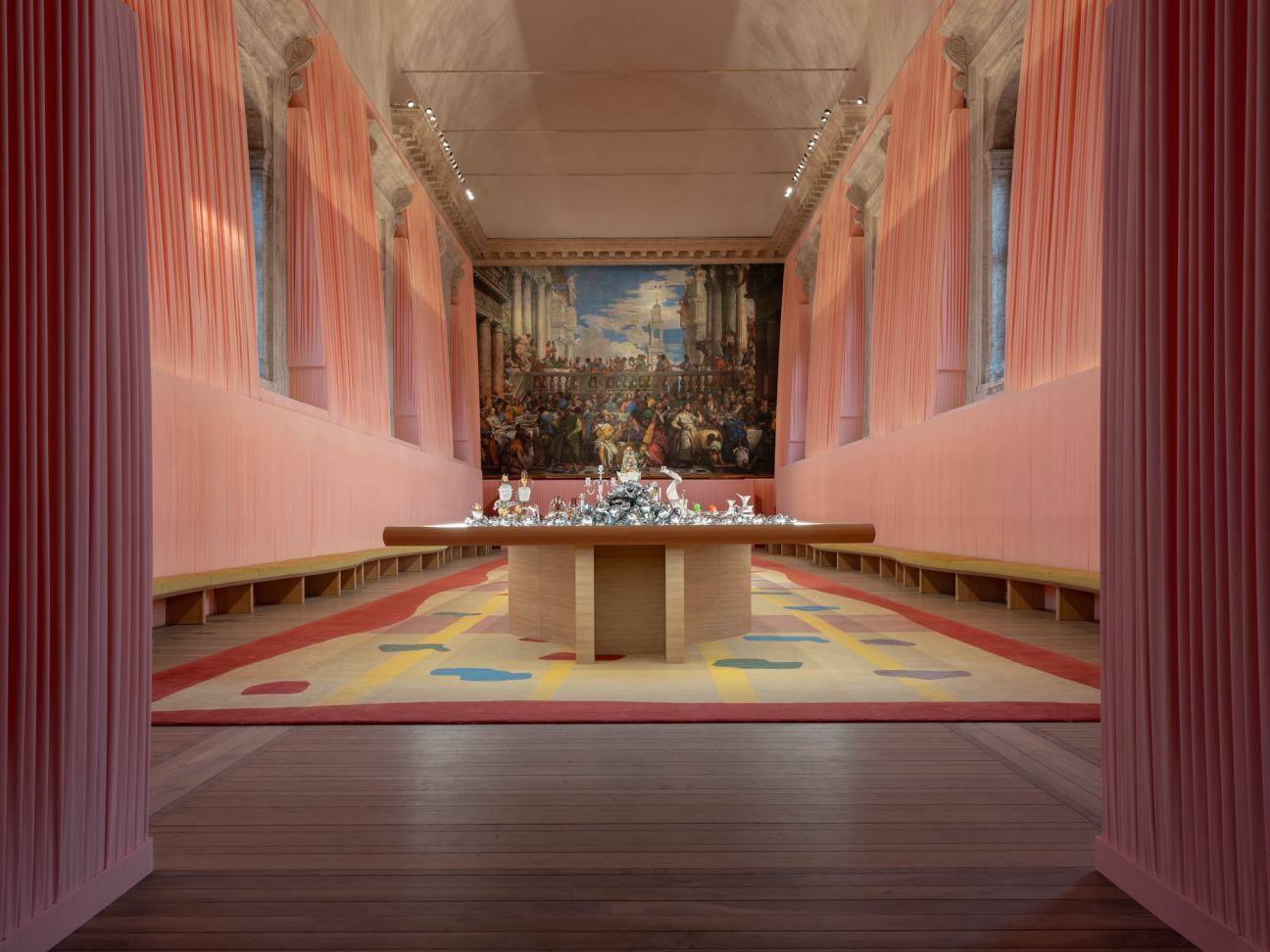
CULTURED: What was the most exciting part of putting something like this together?
Nicolò Rosmarini: This was exciting from the beginning, when we realized that this incredible experience was beginning, and also now that we see the full result. Every discovery that we made in between—from incredible artisans and artists to the collaborations that we did—has been amazing.
Luca Guadagnino: I would say the presentation itself. We've been working together for months before that moment, and then we had the chance to show that. The previous editions of Homo Faber were very minimal and every room was done by different curators. This time, we were the only ones and we approached it on a monumental scale. So we didn't know what kind of reaction to expect.
CULTURED: Is there a section of the exhibition that felt like your problem child?
Guadagnino: Great question. Probably all of them. But the vestibule before the long dining room, was difficult. We wanted to put something in it that makes sense as a transition between the whimsical playfulness of childhood and kind of gives an idea of the imposing decoration in the next room. I remembered the big cypress in the cloister outside, so I said, what if we bring two cypress inside? And what if we put the two magnolias from my personal garden in front of the cypress? Cypress is a very severe and dark tree, and we wanted it to be playful. It's just fantastic.
Rosmarini: The most challenging room for me was the dream room with the infinity pool. We had to express dreams. It was an abandoned room that used to have a pool, but it was without a lot of light, and we couldn't touch anything. We tried all kinds of ideas but in the end, we decided to bring life to the pool again. We filled it with water and had the Alaîa dresses floating on mannequins. It was transformed. We wanted the people to come in and be stunned, but not to think of the effort involved.
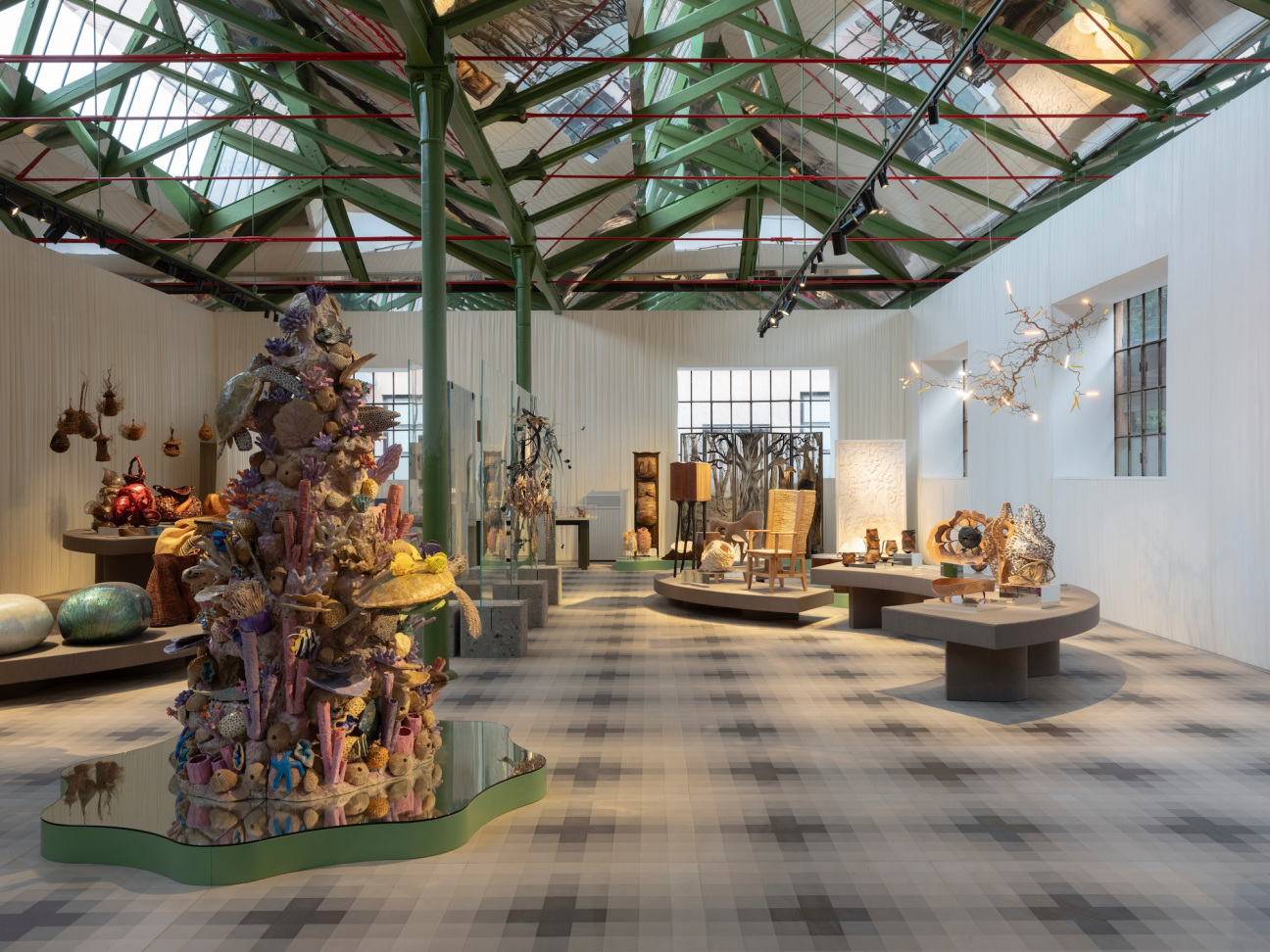
CULTURED: Our world often forgets to celebrate craft—and particularly those who have committed their lives and careers to it. How does this exhibition challenge that?
Guadagnino: I think foraging for and fostering artisans is important, even if its just to remind yourself of the existence of a given tradition. If you lose your sense of the journey that got us here, you lose the concept of honesty, the wholeness of experience—everything becomes flatter and more segmented.
CULTURED: Is there a space in the exhibition that is particularly special to you?
Rosmarini: For me, it’s the room with all the art on the table. Gathering people and the idea of celebration is something I’ve—
Guadagnino: Because you are a party animal.
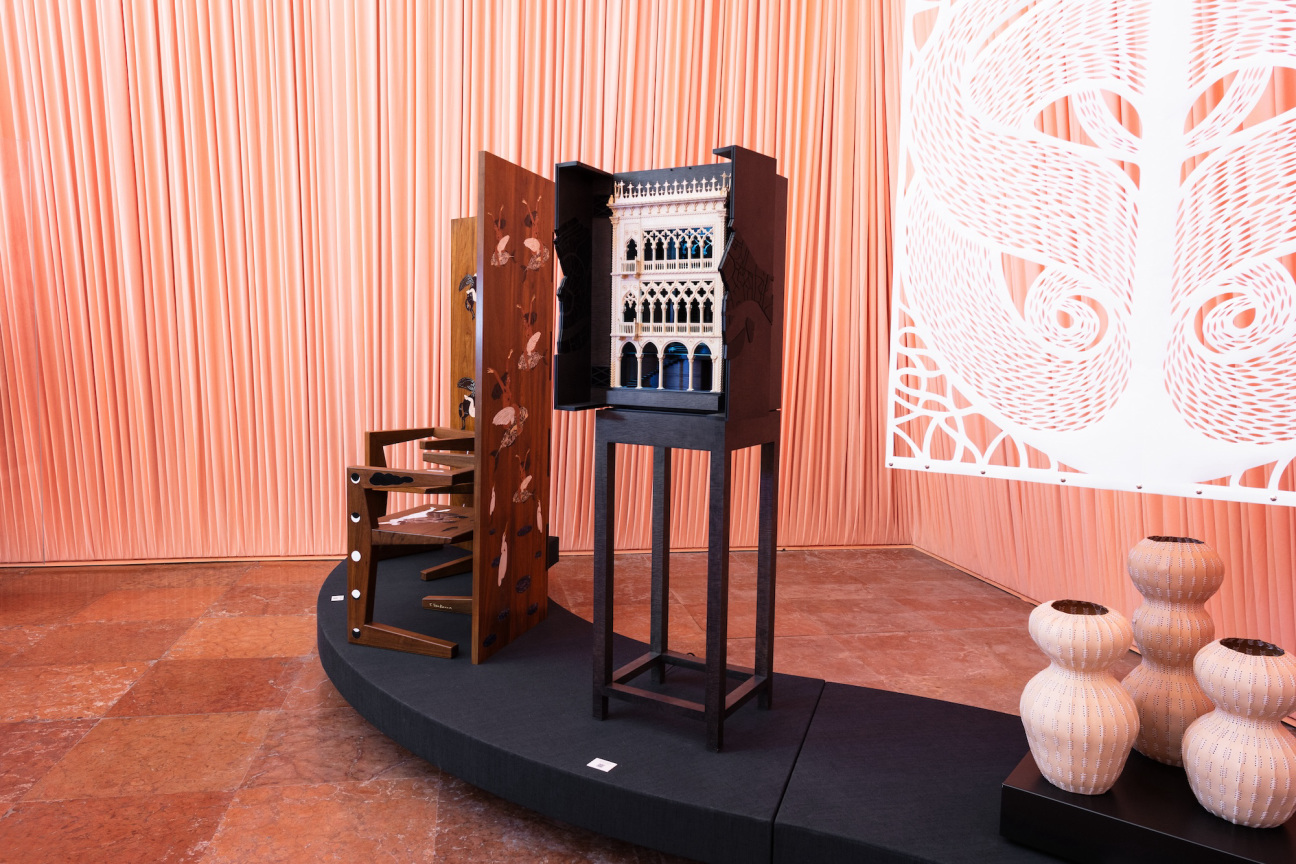
CULTURED: There are a lot of younger artisans involved in this show. What kind of advice do you have to offer them?
Rosmarini: My advice is to keep going, keep doing it—but at the same time, you have to create a network. That's why the Michelangelo Foundation is so important, they help to foster that. Their work is not limited to the Homo Faber exhibition; they connect artisans with artisans, with designers, and with collectors. Networking is a good word. In this case, it's very important to find people like you, to form a group that feels united and strong. It was great to see these artisans talking to one another while preparing for the exhibition and to see the same object or concept created in different ways by different cultures. There is a table that has three baskets weaved by craftspeople from Japan, China, and Korea. Three countries quite close to one another, but so different. I wonder if these artisans might one day make one basket together—one starting it, the other continuing, and the third completing it.
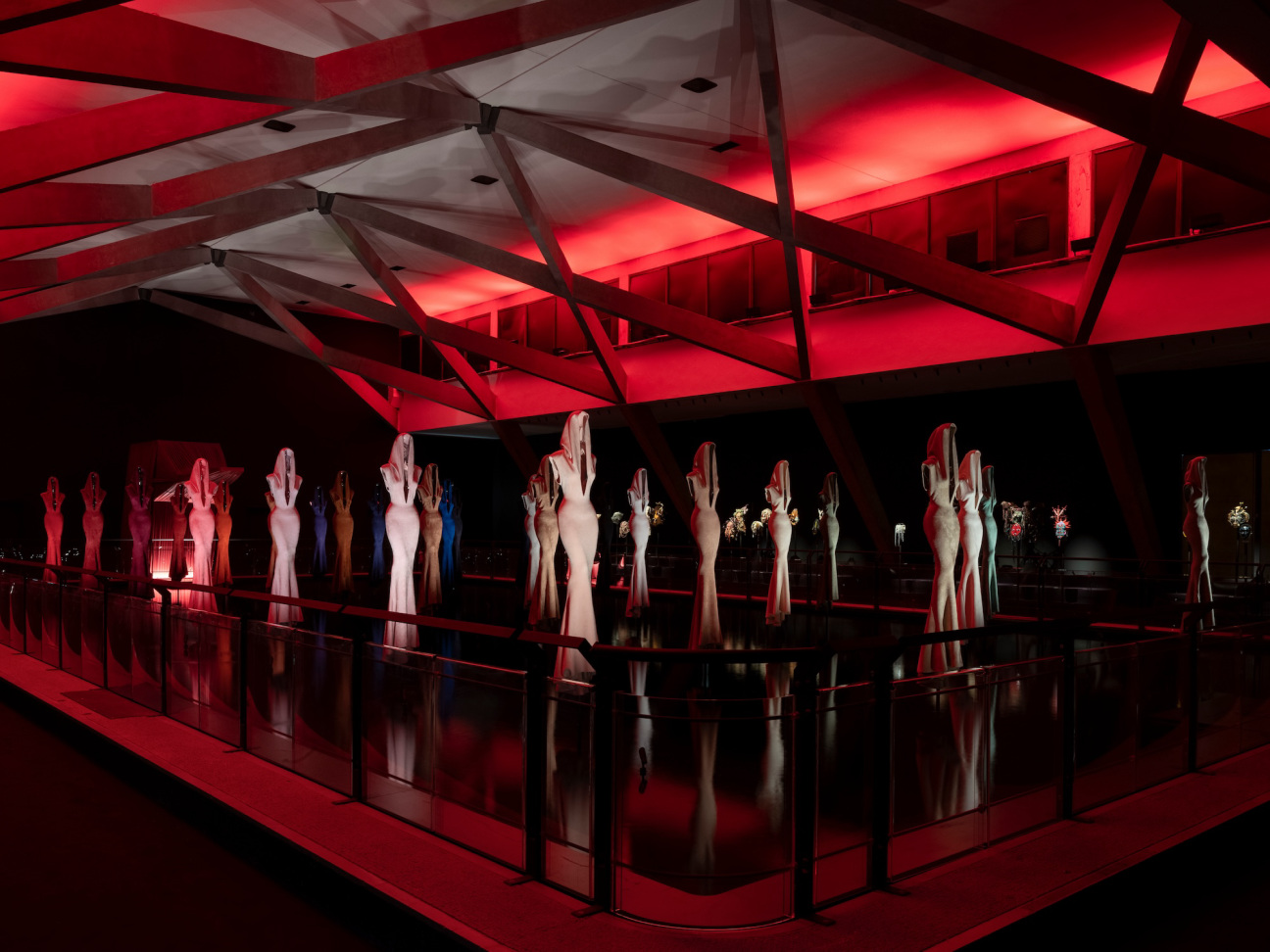
CULTURED: This one, Luca, is for you. You’ve spent the bulk of the last year or so working on developing this exhibition and making Queer, your latest film. How does it feel to tap into your design brain at the same time as your filmmaker brain?
Guadagnino: It’s new for me. I'm used to the audience of cinema. I'm used to going to festivals or premieres and to talking directly to the critics, the journalists, the VIPs—that is a mindset. Speaking to artisans, collectors, and curators is a different mindset. What I love about my life is that I have these ideas, this capacity of wonderment. When you’re like that and you make things, you have the power to make people who don’t have that attitude feel something new. I like that.
CULTURED: What’s one thing that each of you learned from the other?
Guadagnino: I learned from Nicolò the gift of a lot of method and sacrifice.
Rosmarini: From Luca I learned—
Guadagnino: —How to buy shoes.
Rosmarini: Probably that nothing is unachievable in this business.
Guadagnino: I would say nothing is unachievable in life.
Rosmarini: It’s the motto of this exhibition.










 in your life?
in your life?

